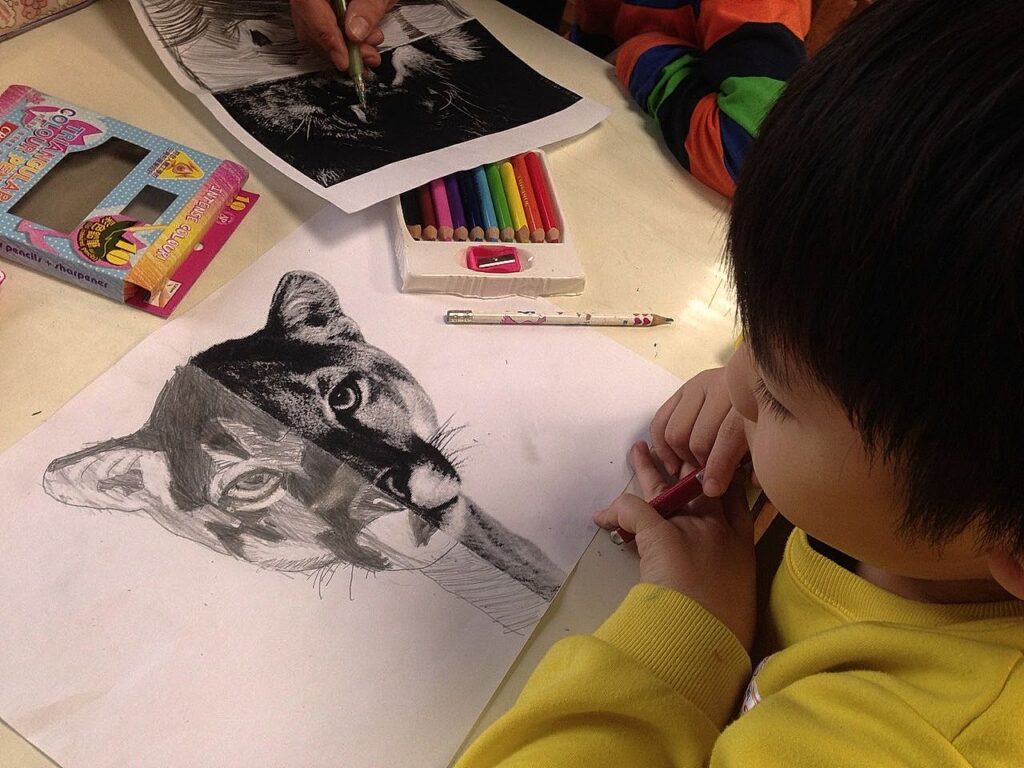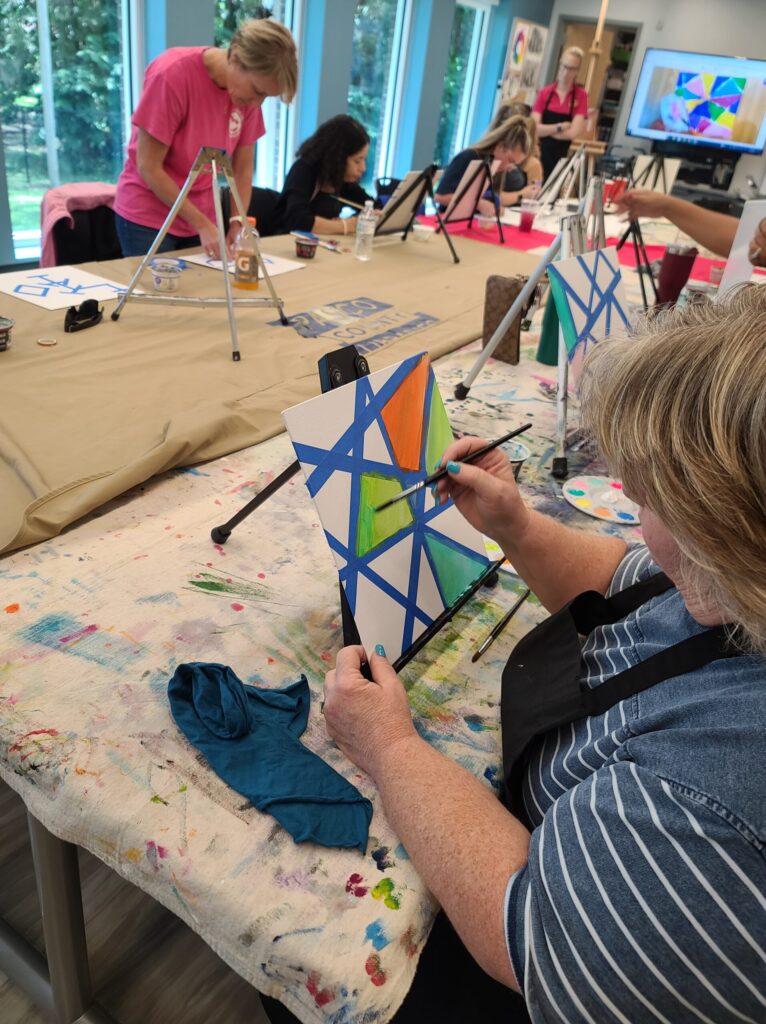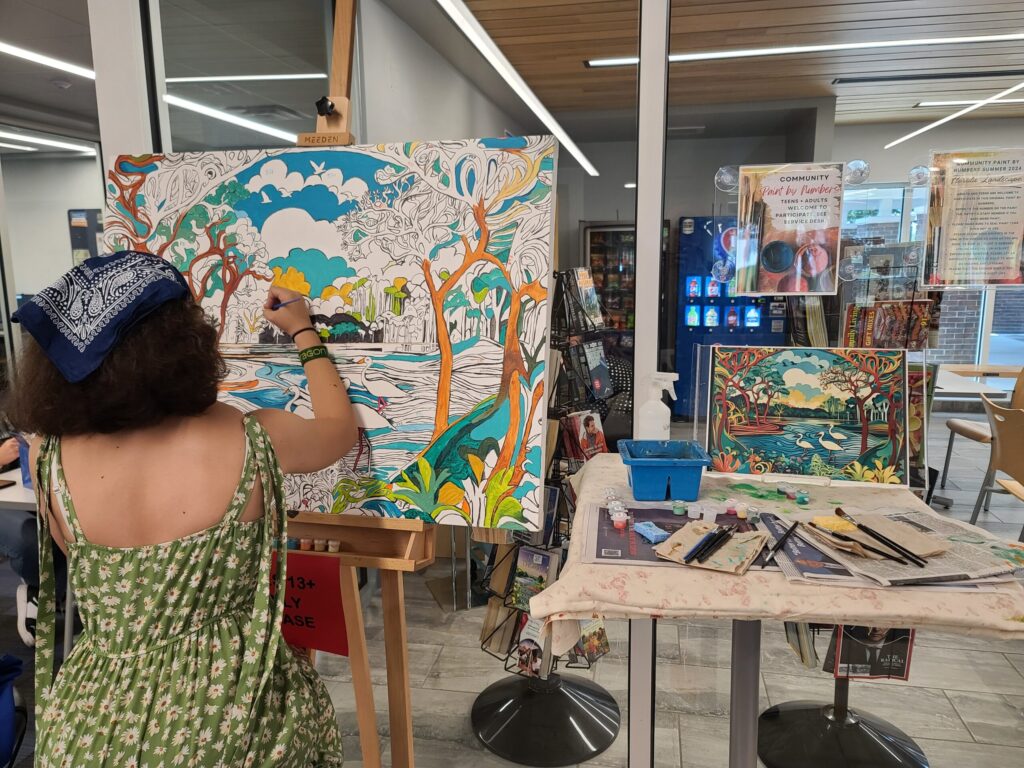When I was younger, I used to think art was just a family habit—something we did like a reflex, but not something that truly mattered in the bigger picture. My mom had me in art appreciation classes at two, and by three I was mixing my own color wheels. With a dad into ceramics and photography and a mom who painted and drew, art felt like second nature. I took it for granted as a child, and in school, I kept excelling in art programs and winning contests.

But when it came time to choose a university path, I turned away from art. I thought it didn’t really matter in the grand scheme of things. I wanted to do something that would have a more direct impact, so I studied English literature and aimed for a practical job that would let me help people in other ways.
Yet life brought me full circle. Art never really left me. In every job I held, those artistic skills were invaluable. And when I started teaching art at the library, I saw just how much it mattered. Our makerspace classes became a hub of community life. People flocked to them, and I realized that art helps people heal, learn, connect, and fulfill dreams they’d set aside long ago.

In fact, many of the adults in my classes had always wanted to be artists but were told by pragmatic parents to become accountants or follow more “practical” careers. Now, in retirement, they’re finally living out those artistic dreams. Without opportunities like these classes, they might never have had the chance. It turns out that being able to offer that space for them to explore art is one of the most meaningful contributions I could make.
In fact, studies have shown that early exposure to art can have long-term benefits well into adulthood, and that learning art later in life can support cognitive flexibility and emotional well-being. It turns out that art education isn’t just a nice-to-have; it’s a powerful tool for lifelong growth.
So yes, I was wrong. Art does matter. It’s not just about galleries or high art. It’s about the everyday joy, healing, and community it brings. And I’m grateful I found my way back to it.

Further Reading:
Childhood Development & the Arts – Delineating the Benefits of Arts Education for Children’s Socioemotional Development by S. J. Holochwost (2021, Frontiers in Psychology) .
Eleanor D. Brown et al. – Arts integration in preschool settings linked to better vocabulary, emotional regulation, stress reduction, and school readiness .
Aging & Cognitive Health –
Active and Receptive Arts Engagement in Healthy Older Adults by M. Fioranelli et al. (2023) shows that ongoing engagement with art can slow cognitive decline and bolster well‑being .
C. Huang’s 2025 study demonstrates short-term cognitive gains from a structured art program among older adults with mild cognitive impairment .
X. Zhuo et al. (2025) reported that expressive art storytelling, alongside caregivers, significantly reduced dementia symptoms and improved quality of life in older adults .
Well‑Being Through Art – A comprehensive review underscores how creating art can reduce stress, reinforce memory, and foster social connections .
Long-Term Academic & Cognitive Benefits – A meta-review spanning decades confirms correlations between arts education and stronger cognitive skills, academic outcomes, and critical thinking in children .
Leave a Reply